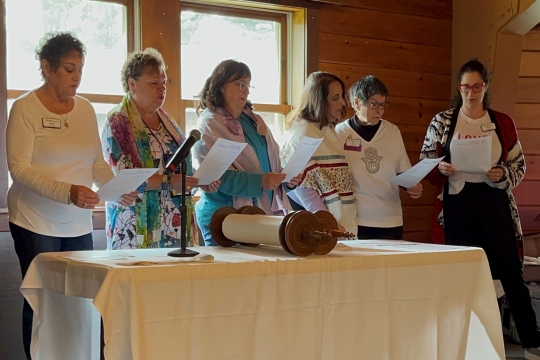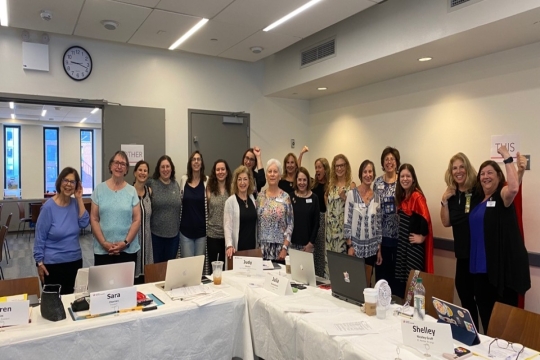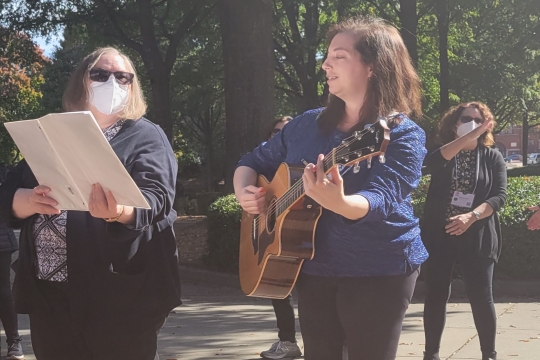In the book of Deuteronomy, we read the many and various strictures upon behavior of the Israelites, which they will need to abide by when entering and conquering the land promised to them. The parashah, Ki Teitzei (Deut. 21:10-25:19), contains laws in different categories, many of which apply directly to women and family matters. Verses 21:10-21:14 refer to the situation of, after defeating an enemy, a man wishing to take one of the captive women as a wife. He cannot just “take” her —she must live in his home for 30 days “lamenting her father and mother” in an unattractive state (cut hair, pared nails). After that time, he can, if he still wishes, take her as his wife. However, if he finds he does not want her, she is to be set free, and not enslaved. Verses 21:15-21:18 instruct that a man with two wives, one loved and one un-loved, both having borne him a son —the oldest by the un-loved wife, cannot give preference to the son of the loved wife. The rules of inheritance for the first born son must be adhered to regardless of how the man feels about his mother. Verses 21:18 -21:22 speak of the “wayward and defiant son” who is brought before the town council by his parents and declared disloyal and defiant. The town council then stones him to death. There are many passages in Torah that as a modern woman are hard to understand or accept. However, one must consider both the society for which these laws were established, and the explanations and modifications that came later in our rabbinic tradition. In the first example, although it is distressful to contemplate the horrific circumstances of war and loss, given the behavior of men in battle both in ancient and modern times, this is an attempt to acknowledge the suffering of those in defeat. It creates a buffer of time, so that true feelings have a chance to develop, while protecting the vulnerable. In the case of the loved and un-loved wife —in a society with multiple wives, this situation probably occurred with a certain amount of frequency. Protecting the rights of the innocent child is paramount here. Of course, after multiple wives were no longer allowed in most Jewish communities, there would be no need for such instructions. Finally, in the case of the stoning of the wayward and defiant son —it is important to note that both mother and father must make the declaration before the town council. The implication here is that both parents have tried and failed to improve his behavior. In later centuries, the rabbis placed numerous restrictions (for example, such a child needs to have both a mother and father whose marriage was without blemish) before the punishment could be meted out, such that this law was essentially moot. This Torah portion goes on to cover many aspects of day-to-day life, giving justice and mercy to both people and animals. Many of these laws seem anachronistic to us today, such as the prohibition of a woman wearing a man’s apparel. As in so many instances, later interpretations bring a little more sense to this (i.e., a woman should not wear man’s apparel if she is doing so in order to pretend to be male). The importance of structure and adherence to a known set of laws was necessary for people to co-exist and prosper. But, just as important, it was necessary for interpreters to be able to adjust laws to accommodate more modern times. Think back to what life in North America and Israel was like in 1913, and what incredible changes have happened through the years. The organizational structure of many sisterhoods and women’s groups has undergone changes as necessary through the years. New leadership models and membership requirements are just two areas that many groups have found it necessary to re evaluate. Change is difficult — even constructive change. The women’s groups affiliated with WRJ have the advantage of wonderful resources, both in materials and advice from seasoned leaders in all areas concerning the continued success of their organizations. A great opportunity is coming up to learn and enhance leadership skills, as well to experience the once in a lifetime celebration of 100 years of WRJ. Join with other women of Reform Judaism at WRJ’s Assembly & Centennial Celebration, December 11-15, 2013, in San Diego, CA. It is through participation in events such as this that we gain new ideas and new skills to lead our members into the future —from strength to strength.
Related Posts

Parashat Yom Rishon shel Rosh HaShanah

Cultivating a Culture of Accountability and Belonging

